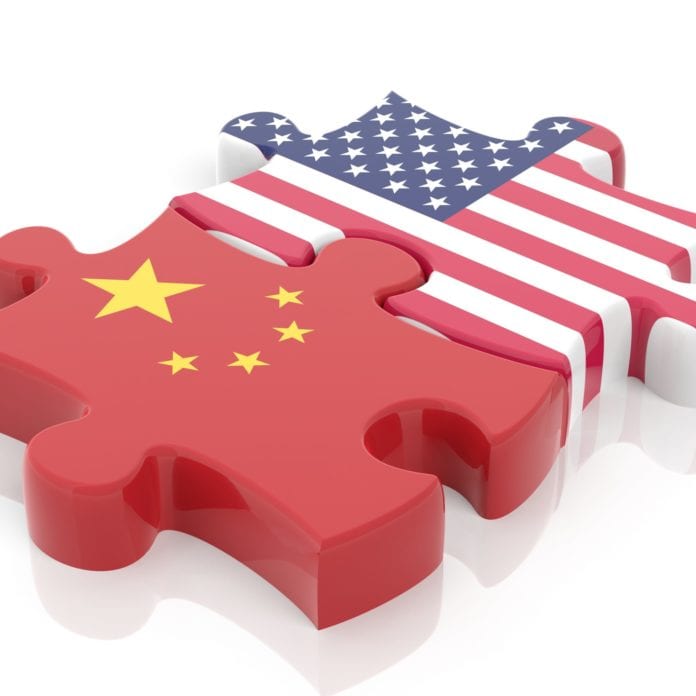Huawei claims 40 5G contracts, 70,000 base stations shipped
In the U.S., where federal lawmakers like to characterize 5G as a race America has to win, President Trump’s administration has broached the idea of a nationalized 5G strategy; that plan has drawn rebuke from legislators, the Federal Communications Commission and the telecom industry–all of whom prefer a private sector-led approach. However, that’s not the case in China.
In 2013, the Chinese Ministry of Industry and Information Technology, the National Development Reform Commission and the Ministry of Science and Technology established an IMT-2020 5G promotion group that has guided three phases of development: key technologies testing, technology verification and 5G system verification. Simultaneously, the government has allocated mid-band spectrum for deployment and technology firms have developed compatible silicon, smartphones, cloud, core, software and radio access network equipment, and carriers have worked in lock-step to prepare for commercialization.
And, with a growing consumer class, a massive industrial base and top-down planning, it would seem China is poised to monetize 5G for both consumers and enterprises.
Huawei, the country’s flagship technology company, says it has shipped more than 70,000 5G base stations, many domestically, in service of carriers China Mobile, China Telecom and China Unicom work towards 2020 commercialization.
Yang Chaobin, Huawei’s president of 5G product line, told RCR Wireless News in a recent interview, that those 70,000 base stations are based on 3GPP Release 15 and 97% of them can support massive MIMO.
Discussing the market opportunities in China, he said operators will first see consumer revenues followed by enterprise. “In the first stage of 5G deployment, the benefits will first be found in the consumer market. It is clear that 5G can provide a much better user experience. We estimate that user experience will be improved by 10 times. At the same time, it will greatly reduce the cost per bit for operators, which we estimate that it will reduce by 10 times. Therefore, in the first stage of 5G deployment, operators can profit from the consumer market. During the second stage of 5G deployment, with the development of IoT and the growing need for ultra-low latency, the operators will gradually find new opportunities from different verticals.”
Even prior to 5G, China has the most LTE connections of any country with 1.55 billion, according to the November Ericsson Mobility Report. In terms of growth, China is ahead there too with 37 million new mobile subscriptions in the third quarter of 2018; the country has a mobile penetration rate of 111% according to the Ericsson research. There will be more than 1 billion mobile 5G subscriptions by 2024, the report forecasts, with the U.S., South Korea, Japan and China leading the way.
According to the China Academy of Information and Communications Technology, the country will Invest between $134 billion and $223 billion in 5G between 2020 and 2025 generating an economic value as high as $3.7 Trillion with operators realizing some $283 billion in attendant revenue. All three of China’s operators–China Mobile, China Telecom and China Unicom, collaborating through their network infrastructure joint venture China Tower, have already begun building, far surpassing the scale seen elsewhere in the world. China Mobile, the largest operator, is 5G in the 2.6 GHz and 4.9 GHz in a variety of trial scenarios ahead of commercialization.
In the U.S., Verizon and AT&T both have limited commercial 5G deployments and plans to expand toward nationwide coverage in the 2020-2021 timeframe. Sprint is expected to launch in a few markets potentially later this week and T-Mobile US testing 5G with plans to deploy nationwide using its 600 MHz spectrum portfolio.
Back to the race characterization, the U.S. has commercial 5G but China has a much more well-articulated national vision with buy-in throughout the value chain.
Yang Chaobin said the 5G descriptor is an “overstatement…According to our analysis, the global market can be divided into three categories. The first category includes China, South Korea, Japan and Gulf countries in the Middle East. Their current 4G network is already congested, so there is a need for 5G roll out. The second category includes Europe and the United States. Their LTE development hasn’t been that great, so there is some need for 5G in some areas of those countries. But it will not be a huge need as it is in first category. The rest of the countries belong to the third category.”

